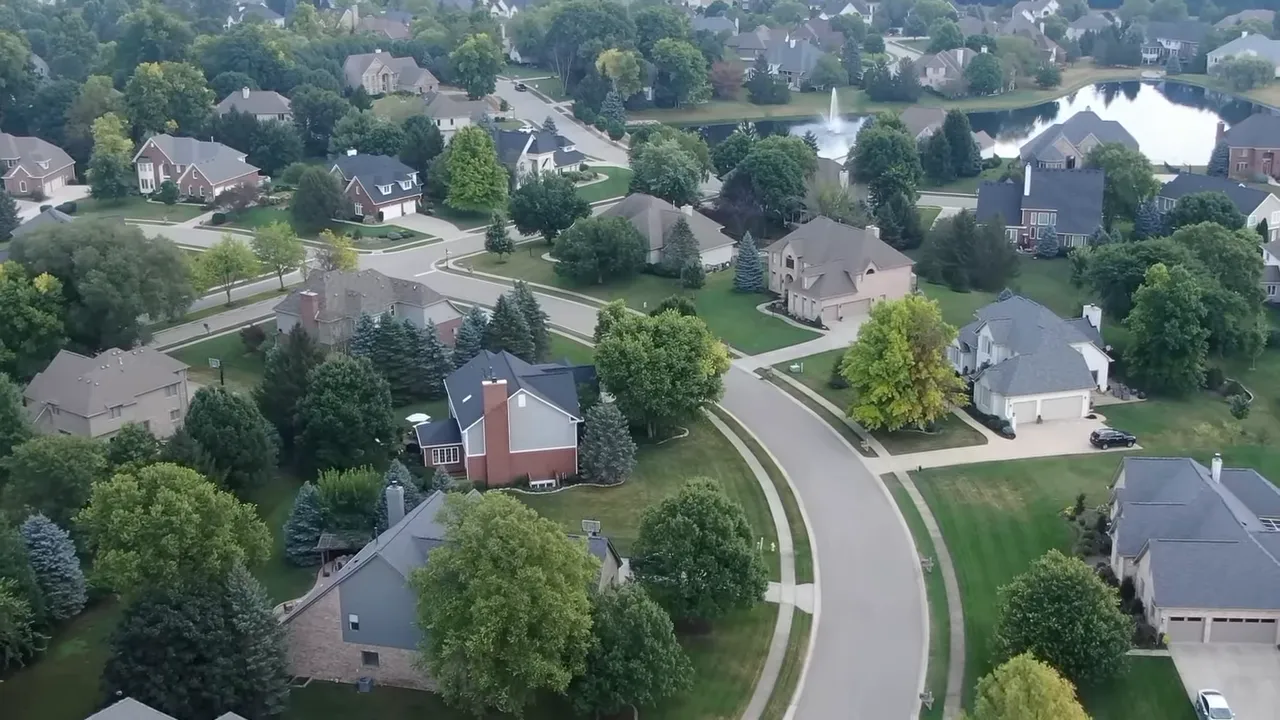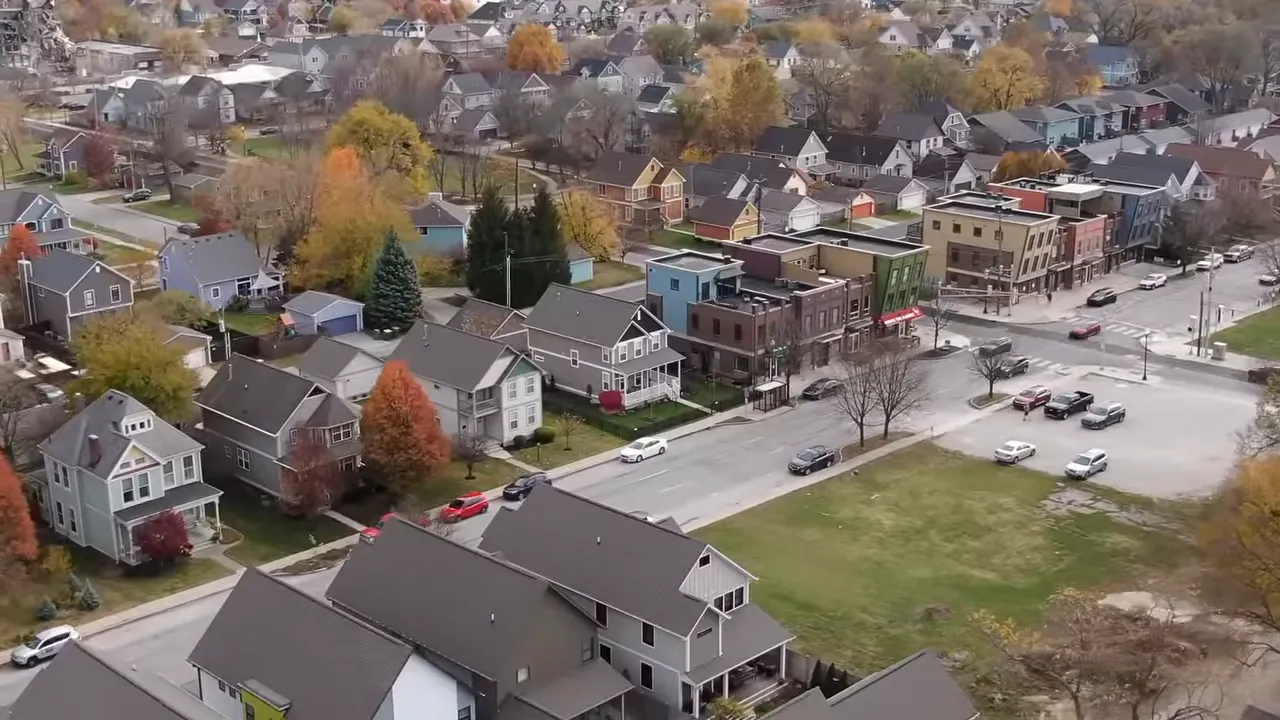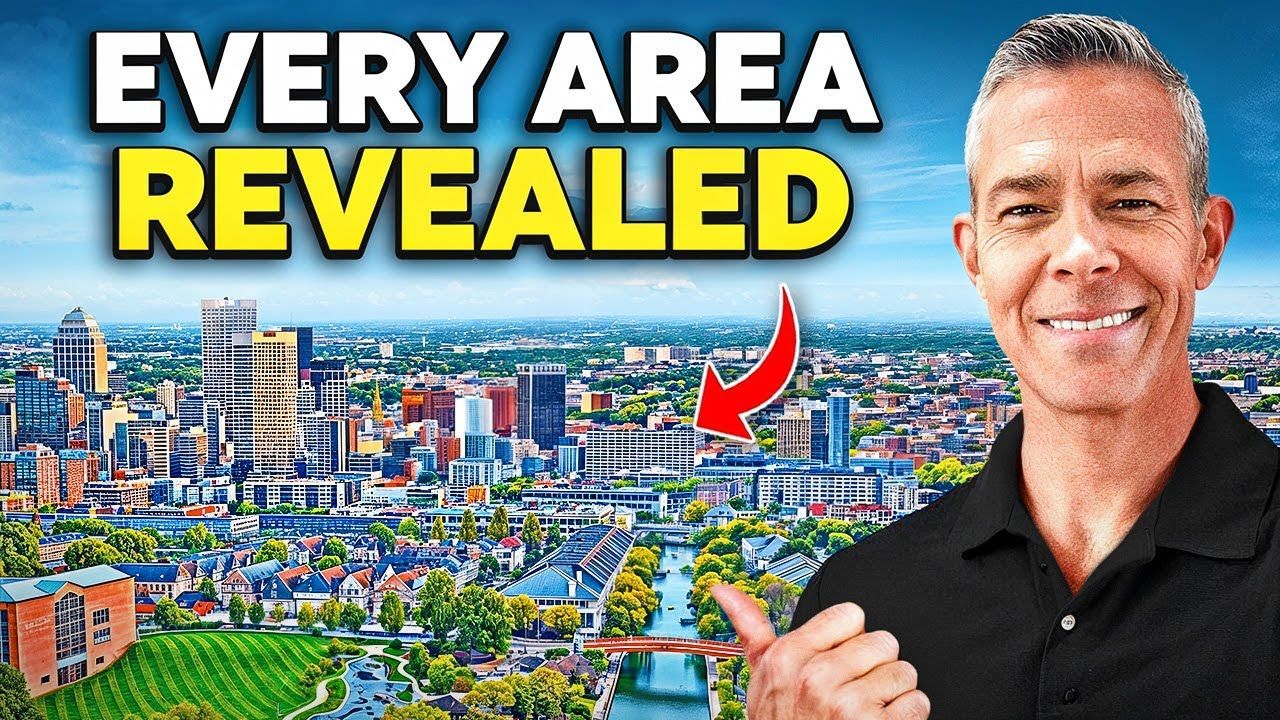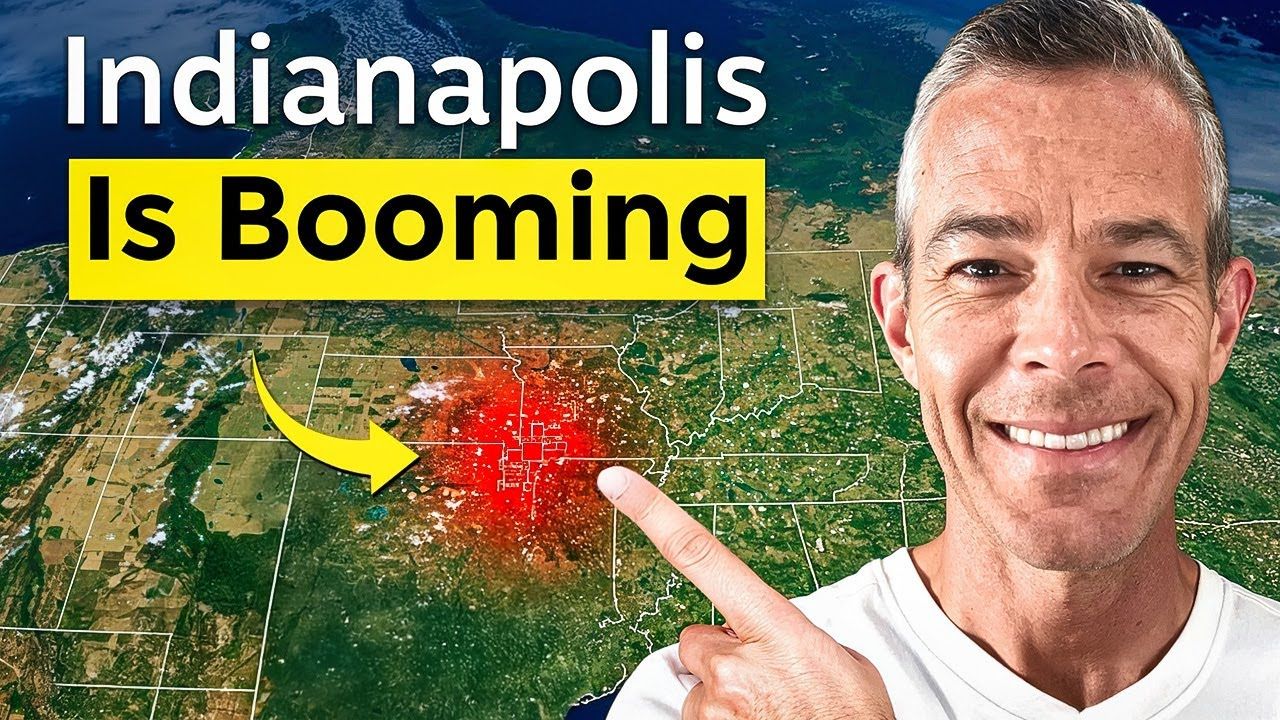NEVER Buy These Type of Homes in Indianapolis!
If you are moving to Indianapolis, you get access to beautiful neighborhoods and historic charm. But moving to Indianapolis also means knowing where hidden costs and long term headaches hide. This guide walks through six types of homes and condition red flags that regularly turn a dream purchase into an expensive problem. Read closely, follow the inspection tips, and use the alternatives so your move is smart and safe.
Table of Contents
- Introduction: What To Watch For When Moving to Indianapolis
- 1. Floodplain Properties in Indianapolis: The Unseen Tax on Your Monthly Budget
- 2. Historic Indianapolis Homes With Failing Foundations
- 3. Outdated Electrical Systems: A hidden fire and financing risk
- 4. Historic Indianapolis Beauties That Become Money Pits
- 5. Condos and Townhomes With Risky HOAs in Indianapolis
- 6. Moisture, Drainage, and Mold in Indianapolis Homes
- Practical Checklist Before Moving to Indianapolis
- Summary: Protecting Your Budget When Moving to Indianapolis
- FAQs About Moving to Indianapolis
Introduction: What To Watch For When Moving to Indianapolis
Buying a home in Indianapolis isn’t just about picking your favorite neighborhood or falling for a gorgeous front porch—it’s about spotting the hidden issues that can wreck your budget later. This guide breaks down six types of properties and condition red flags that often turn “dream homes” into money drains, from floodplain surprises to aging systems and risky HOAs. Read through the examples, inspection tips, and safer alternatives so you can enjoy Indy’s charm while avoiding the long-term headaches.

VIEW HOMES FOR SALE IN INDIANAPOLIS
1. Floodplain Properties in Indianapolis: The Unseen Tax on Your Monthly Budget
If you are moving to Indianapolis and choose a home near the river, canal, or creeks, make flood risk your first check. Parts of Indianapolis—especially near the White River, the Canal, and Fall Creek—are inside FEMA designated flood zones. Even if a house looks dry and elevated, being in a flood zone can add $2,000 to $4,000 or more per year in mandatory flood insurance, create appraisal friction, and shrink the pool of future buyers when you resell.
Common scenarios to watch for
- Properties that are horizontally in a flood zone but vertically elevated enough to avoid actual flood elevations.
- Partial lots where only a section of the parcel sits in the mapped floodplain.
- Older grading and drainage that direct water toward the foundation.
Inspection checklist and mitigation
When moving to Indianapolis and touring a potential home, always
- Check the FEMA flood maps for the parcel and confirm any historical flood claims.
- Request an elevation certificate if the seller claims the house is above base flood elevation.
- Inspect basement and crawl spaces for modern drainage systems, functioning sump pumps, and proper downspout discharge away from the foundation.
- Review the flood insurance policy carefully for gaps such as contents coverage or limited building coverage.
Alternatives: look for nearby parcels outside the floodplain, higher-elevation lots in the same neighborhood, or properties with documented flood mitigation and warranties.
2. Historic Indianapolis Homes With Failing Foundations
If you are moving to Indianapolis to get that century-old charm, prepare for the possibility of foundation issues. Neighborhoods like Irvington, Fountain Square, and Bates Hendricks are full of beautiful older homes set on brick or stone foundations built long before modern soil engineering. Central Indiana’s heavy clay soils expand and contract with moisture, and over decades that movement can cause stairstep cracks, separated brick foundations, bowed walls, and sagging floors.
What to look for during a showing
- Stairstep cracks in masonry and mortar gaps.
- Chimneys or basement walls that lean or bow toward the interior.
- Doors and windows that stick—this often indicates shifting or uneven floors.
- Patches of sprayed foam and amateur repairs in the crawl or basement—these are red flags, not solutions.
Inspection and financing considerations
A standard home inspector will flag visible signs, but foundation issues often need a structural engineer for a thorough evaluation. Repairs can be expensive; major structural work may complicate FHA or VA financing and can delay closings. If a house had repair work done, ask for permits, contractor contact information, and warranties.
Alternatives: find historic homes with documented foundation repairs, recent waterproofing systems, or new builds in historic districts that preserve architectural character without inheriting century-old foundations.
3. Outdated Electrical Systems in Older Indianapolis Homes
Many buyers overlook electrical systems until insurance underwriters or contractors raise concerns. If you are moving to Indianapolis into an older home, you might encounter knob and tube wiring, aluminum wiring, fuse boxes, or ungrounded two-prong outlets. These systems can expand and contract, lose connections, spark, and become serious fire hazards.
Signs that the wiring needs attention
- Warm or discolored outlets and flickering lights.
- Frequent breaker trips or blown fuses.
- Exposed wiring in basements or attics and old two-prong receptacles.
- Insurance companies requesting proof of modernization, which can delay closing.
Cost realities and next steps
Modernizing an entire electrical system can run from $10,000 to $20,000 or more, depending on home size and accessibility. When you are moving to Indianapolis and weighing an older property, add the electrical update cost to your offer strategy or prioritize homes that have certified upgrades and documentation.

4. Historic Indianapolis Beauties That Become Money Pits
If you are moving to Indianapolis for historic architecture, expect tradeoffs. Old homes offer ornate woodwork, tall ceilings, and grand porches—but deferred maintenance can include roof replacements, HVAC failures, lead paint, asbestos, galvanized plumbing, and cracked plaster. Small repairs add up quickly; comprehensive renovations can easily push into six figures.
Common expensive items
- Lead-based paint and asbestos abatement (homes built before 1978 commonly need testing).
- Full roof replacements and major HVAC overhauls.
- Galvanized plumbing replacement and whole-house re-piping.
- Window replacements for energy efficiency and comfort.
Inspection tips
For any historic home you consider, get permit histories for major work. Test for lead and asbestos when suspected. Ask for receipts and warranties from contractors for any claimed renovations. Cosmetic updates are common—do not let fresh paint hide structural or system problems.
Alternatives: choose older homes with a record of system upgrades to current code or newer infill builds that preserve historic style while delivering modern systems and energy efficiency.
5. Condos and Townhomes With Risky HOAs in Indianapolis
Low maintenance living appeals to many moving to Indianapolis, but not all HOAs are equal. Some boards are professionally managed with well-funded reserves; others are underfunded, poorly managed, or plagued with political disputes. Buying into a badly-managed HOA can mean unexpected special assessments, skyrocketing monthly fees, and resale headaches.
What to check before you sign
- Monthly dues and what they cover. Typical ranges are often $300 to $500 but can exceed $700 to $1,000.
- Reserve studies and financial statements. Low reserves often precede multi-thousand-dollar special assessments.
- Recent special assessments and whether siding, roof, or structural projects were recently completed.
- Meeting minutes and resident sentiment; long-standing board disputes are a red flag.
Example to remember: some complexes have issued assessments of $25,000 per unit to repair building envelopes. That happens when boards delay maintenance until a crisis.
Alternatives: prioritize communities with transparent financials, strong reserve balances, and a documented maintenance track record. Or choose townhomes without an HOA or single-family homes where you control the maintenance timeline yourself.
6. Moisture, Drainage, and Mold in Indianapolis Homes
Indianapolis gets over 40 inches of rain per year, often delivered in heavy bursts. How a home handles that water makes a huge difference. Poor gutters, incorrect grading, missing downspout extenders, failed sump pumps, and inadequate perimeter tile systems invite basement leaks, mold growth, and structural rot.
Red flags on inspection
- Musty or damp basement smell; trust your nose when you enter the lower level.
- Efflorescence or crystallization on basement walls—this indicates past water intrusion.
- No vapor barrier in the crawl space or damaged encapsulation material.
- Gutter downspouts that drain at the foundation or sloping that directs water toward the house.
Remediation and cost considerations
Mold remediation alone ranges from a few thousand to much more depending on severity. But remediation without correcting the source of water is wasted money. Ensure functioning sump pumps, well-maintained gutters and downspouts, proper grading away from the foundation, and perimeter tile or encapsulation where necessary.
Alternatives: favor homes with documented modern waterproofing and tile systems or be prepared to budget for encapsulation and perimeter drain improvements if you love an older home.
Practical Checklist Before Moving to Indianapolis
- Run the FEMA map check and verify elevation certificates for borderline properties.
- Request contractor receipts, permits, and warranties for any major system upgrades or structural repairs.
- Hire specialists as needed: structural engineer, electrician, mold expert, and a qualified roofer.
- Review HOA documents thoroughly: financials, reserve studies, meeting minutes, and recent special assessments.
- Walk the property in heavy rain or right after a storm when possible to see how water is managed.

Get Instant Access to Indianapolis New Homes
Summary: Protecting Your Budget When Moving to Indianapolis
Moving to Indianapolis opens up a lot of great options, but it also demands local knowledge. Floodplain quirks, historic foundations, outdated wiring, deferred maintenance, risky HOAs, and moisture issues are common traps. Each can quickly add thousands—sometimes tens of thousands—of dollars to the true cost of ownership. Do the homework, bring experts, and prioritize documentation. That approach will protect your budget and your peace of mind.
If you need help buying a home in Indianapolis, contact me — call or text 317-932-8620 and I’ll help you find a safe, smart purchase.
VIEW HOMES FOR SALE IN INDIANAPOLIS
FAQs About Moving to Indianapolis
If I am moving to Indianapolis, do I always need flood insurance if a property is in a mapped flood zone?
If a lender sees a property in a FEMA flood zone, flood insurance is usually required. Even if flooding seems unlikely, lenders and insurance companies often require coverage. Costs vary by property and carrier, but expect $2,000 to $4,000 or more annually in many cases.
When moving to Indianapolis, how can I tell if a historic home has had proper foundation repairs?
Ask for permits, contractor invoices, and warranties for repair work. A qualified structural engineer can provide a condition report. Look for professional waterproofing, functioning drainage, and clear documentation rather than spray foam patches or DIY fixes.
If I am moving to Indianapolis and find aluminum wiring or knob and tube, what should I do?
Schedule an electrical inspection and get quotes for upgrading to modern wiring. Insurance companies may require proof of remediation. Budget for significant work—often $10,000 to $20,000—depending on house size and complexity.
How can I avoid joining a poorly managed HOA when moving to Indianapolis?
Request the HOA financials, reserve study, and meeting minutes before committing. Talk to residents and check for recent special assessments or board disputes. Consider communities with professional management and transparent histories.
What are the best steps to verify a basement is dry when moving to Indianapolis?
Inspect for efflorescence, musty smells, and standing water. Verify functional sump pumps, proper downspout discharge, and interior dehumidifiers. If in doubt, hire a waterproofing specialist to assess perimeter tile and grading.
Is it better to buy a renovated historic home or a new build in a historic district when moving to Indianapolis?
Both have pros and cons. Renovated historic homes preserve character but require careful documentation of system updates. New builds in historic districts can deliver modern systems with period-appropriate design and often less maintenance risk. Choose based on your tolerance for renovation and inspection findings.
READ MORE: The REAL Reasons Indianapolis is The #1 CITY in America
jason compton
A former teacher turned full-time real estate agent serving Greater Indianapolis. I help buyers, sellers, and relocation clients make informed moves—especially those coming from out of state. From neighborhood insights to home tours, my goal is to simplify the process and help you feel confident in every step.
Stay Informed
Insights, Tips & Life in Indianapolis
Your go-to resource for all things real estate and Indy living. Whether you're buying, selling, relocating, or just curious about the local market, our blog is packed with helpful articles, expert advice, and community highlights to keep you informed and inspired.













